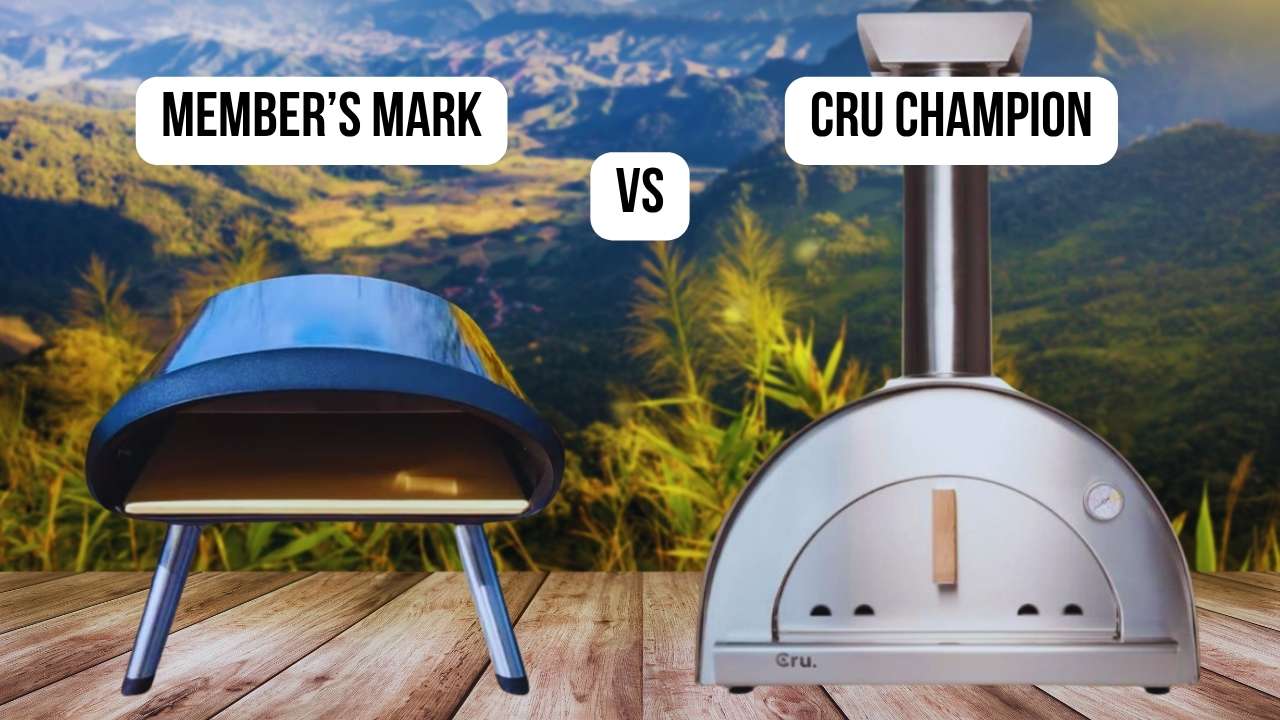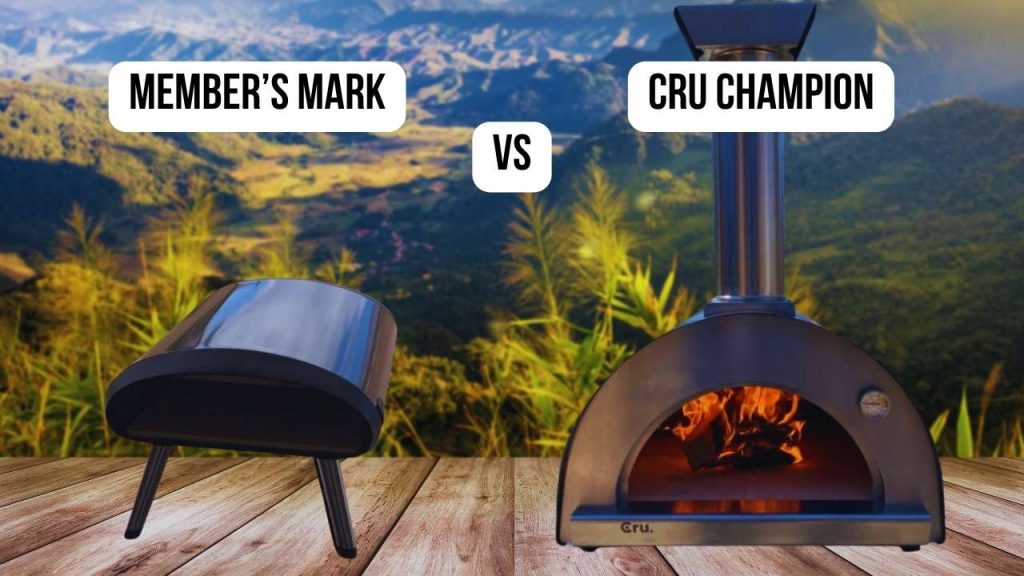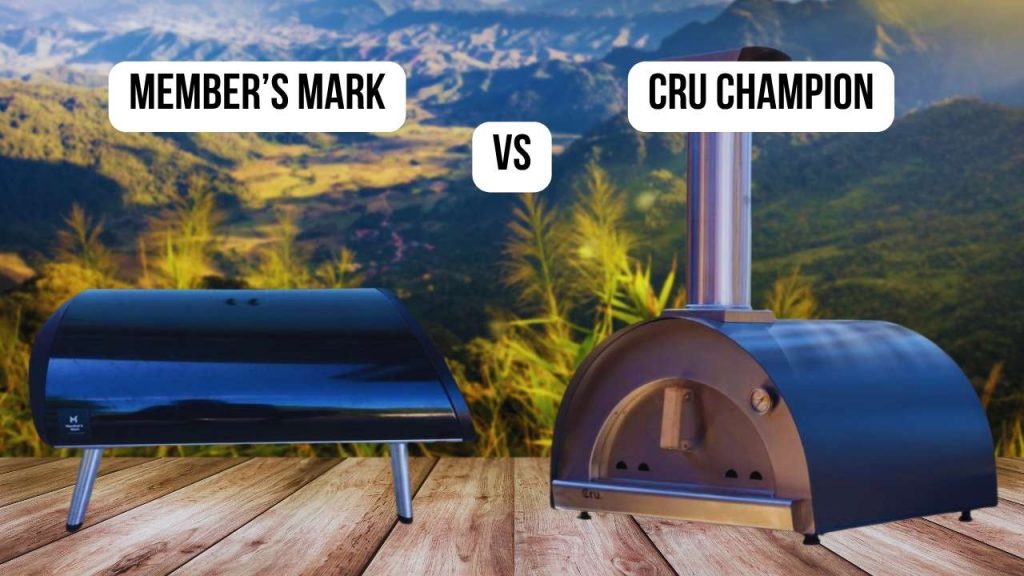I’m a restaurant chef with over 10 years of experience at my restaurant, Dequte Restaurant LironBoylston. In this article, I will compare the Member’s Mark Pizza Oven and the Cru Champion Pizza Oven, since I have personally used both in my kitchen. I evaluated them across the aspects that matter most—quality and materials, temperature control, shape, first-time usage impressions, power source, size, ease of cleaning, and I also conducted a real pizza cooking test to see how long each oven takes and how the results taste. If you’d like to see more about how I test pizza ovens step by step, you can check out my separate article detailing my process.
The Member’s Mark Pizza Oven is a compact, gas-powered outdoor oven designed to be budget-friendly while still promising high heat and fast cooking.
The Cru Champion Pizza Oven is a premium wood-fired model built for serious enthusiasts who want a more traditional cooking experience and extra space for larger batches.
Here, I’ve done an in-depth comparison of the Member’s Mark Pizza Oven and the Cru Champion Pizza Oven, backed by my test results.
Finally, please note that I will use referral links in this article, which greatly help keep my blog alive. If you find this comparison useful, I’d really appreciate you using those links when you make your purchase—it costs you nothing extra.
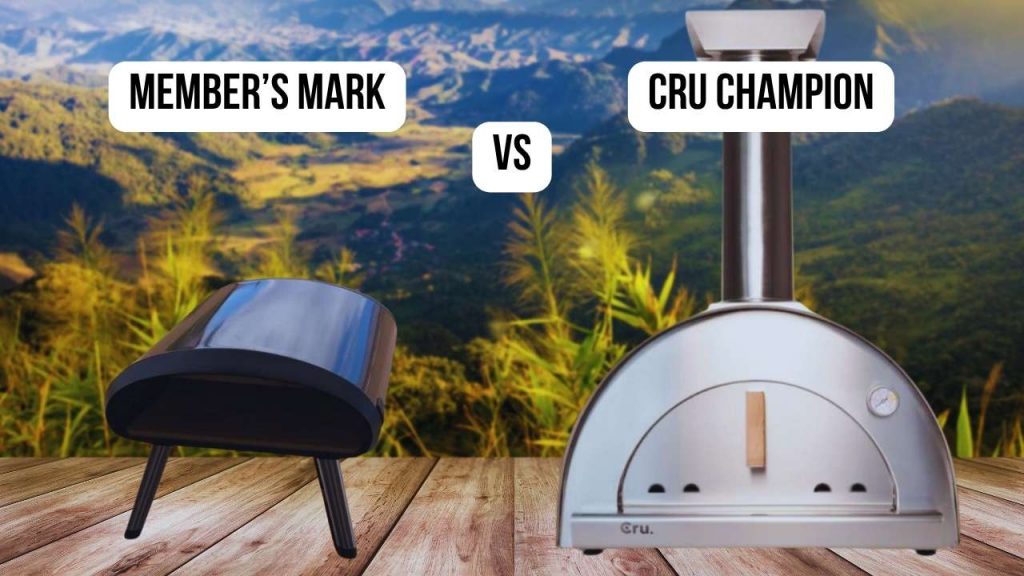
Member’s Mark VS Cru Champion: Quality and Materials
| The Member’s Mark Pizza Oven uses a combination of aluminum, stainless steel, and a cordierite stone. While the metal body is thinner than premium ovens, all accessories felt solid, and the included peel and cutter were a nice touch for the price. Despite its lightweight build, it held up surprisingly well to repeated use. |
The Cru Champion is constructed with high-end AISI304 stainless steel, thick ceramic stones, and dual insulation layers. The materials feel extremely durable and built for heavy, long-term use. However, the chimney showed discoloration sooner than expected.
|
Member’s Mark VS Cru Champion: Temperature Control
| Member’s Mark claimed 900°F, but real-world tests showed it typically capped around 755°F after extended preheating. The flame is delicate and heat consistency can fluctuate, but once you learn how to manage it, you can get satisfying results. |
The Cru Champion easily maintains high heat—reaching 850–900°F in under 15 minutes with the side rack. It holds steady temperatures with less intervention, making it simpler to bake multiple pizzas back-to-back.
|
Member’s Mark VS Cru Champion: Shape
| The small, rounded dome design helps distribute heat fairly evenly in such a compact footprint. Its rotating stone is an unusual and handy feature that aids consistent cooking without manually turning the pizza. |
The large semi-circular dome and wide cooking floor (24″ x 24″) provide tons of space to cook multiple pizzas, large roasts, or bread. This design retains heat well but requires more space and clearance.
|
Member’s Mark VS Cru Champion: First-Time Usage Impressions
| The Member’s Mark was very approachable. Assembly took only a few minutes, and setup was straightforward for a beginner. Although the preheat time felt longer than claimed, the learning curve was gentle. |
The Cru Champion made a big impression right out of the box—substantial, professional-grade parts and a premium feel. Assembly was still simple, though placing it required two people due to its weight and size.
|
Member’s Mark VS Cru Champion: Power Source
| Fueled by propane with a battery-powered rotating stone, Member’s Mark is clean and convenient. There’s no need to tend a fire, making it easy for beginners or casual users. |
The Cru Champion runs on wood or charcoal, delivering authentic wood-fired flavor but requiring more attention to maintain the fire and temperature. This can be rewarding but is more demanding for newcomers.
|
Member’s Mark VS Cru Champion: Size
| Compact and lightweight at 28.7 lbs, it’s easy to move or store. The interior fits up to a 12” pizza comfortably—ideal for smaller outdoor setups or casual cooking. |
Substantial and heavier (around 170 lbs assembled). With space for an 18” pizza or two smaller pies, it suits serious cooks or large gatherings. Less portable and requires a dedicated spot.
|
Member’s Mark VS Cru Champion: Ease of Cleaning
| Cleaning the Member’s Mark is straightforward: remove the stone once cool, wipe the inside, and rinse the accessories. The small size makes cleanup quick. |
The Cru Champion’s removable dome is a clever feature for cleaning. Brushing out ash is easy, but managing soot and large surfaces takes longer. It’s worth it if you plan to cook often.
|
Pizza Cooking Test
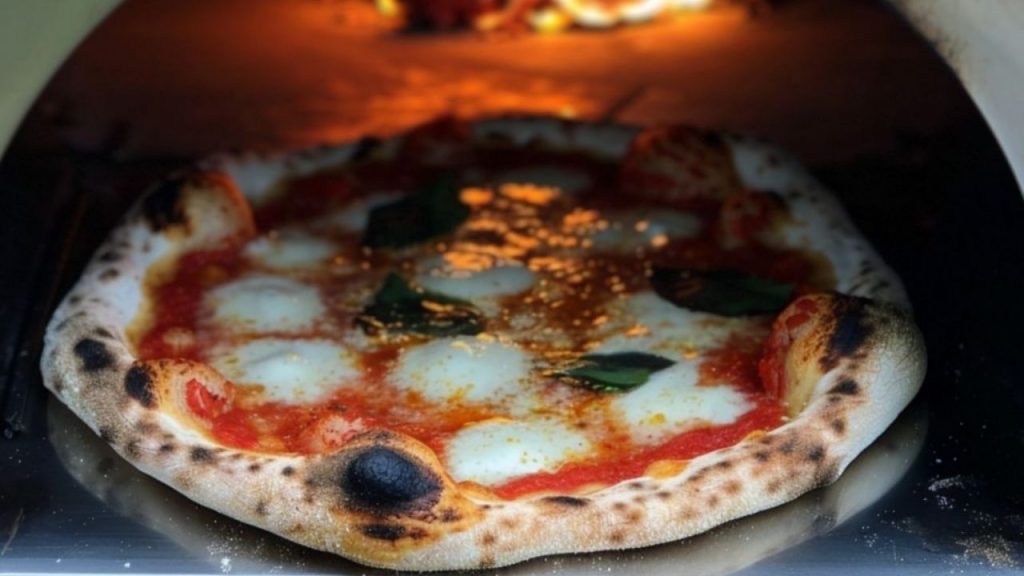
When it came time to put the Member’s Mark and Cru Champion pizza ovens to the test, I followed the same process for both: I prepared identical batches of classic Margherita pizza dough and tracked preheating time, cooking speed, and taste.
How quickly did the ovens heat up?
The Member’s Mark Pizza Oven took a bit longer than the manufacturer suggests. Although it claims to reach 900°F in 25 minutes, in my tests it held closer to 750°F even after about 30 minutes of preheating. I found the preheating phase required some patience, especially if you want the stone to be fully saturated with heat.
In contrast, the Cru Champion heated up impressively fast. With a good load of dry wood kindling, it reached 850°F in under 15 minutes, which is remarkable for an oven of its size. Using the side wood rack boosted the heat even faster, though I didn’t need the extra fuel when cooking just one pizza.
How quickly did the Margherita pizza cook?
Once the Member’s Mark was ready, my Margherita pizza baked in about 5–6 minutes. The rotating cordierite stone was surprisingly effective at preventing burnt spots, and it delivered a crust that was evenly golden rather than charred.
The Cru Champion worked at another level of speed and intensity. The same style pizza cooked in just 90–120 seconds. The bottom crisped almost instantly, and the cornicione (the puffy edge of the crust) developed beautiful leopard spotting typical of a high-temperature wood-fired oven.
What did it taste like?
Flavor-wise, the Member’s Mark produced better results than I expected for a gas oven in this price range. The crust was crisp on the outside and lightly chewy inside, with toppings that cooked evenly. It didn’t have the subtle smokiness you get from wood fire, but it still created a clean, satisfying taste that would please most home pizza makers.
The Cru Champion delivered a more traditional wood-fired flavor, with a slightly smoky aroma and a delicate, airy crumb inside the crust. The cheese and tomato sauce caramelized beautifully under the intense heat. This is the kind of pizza I’d be happy to serve in my restaurant.
How We Tested
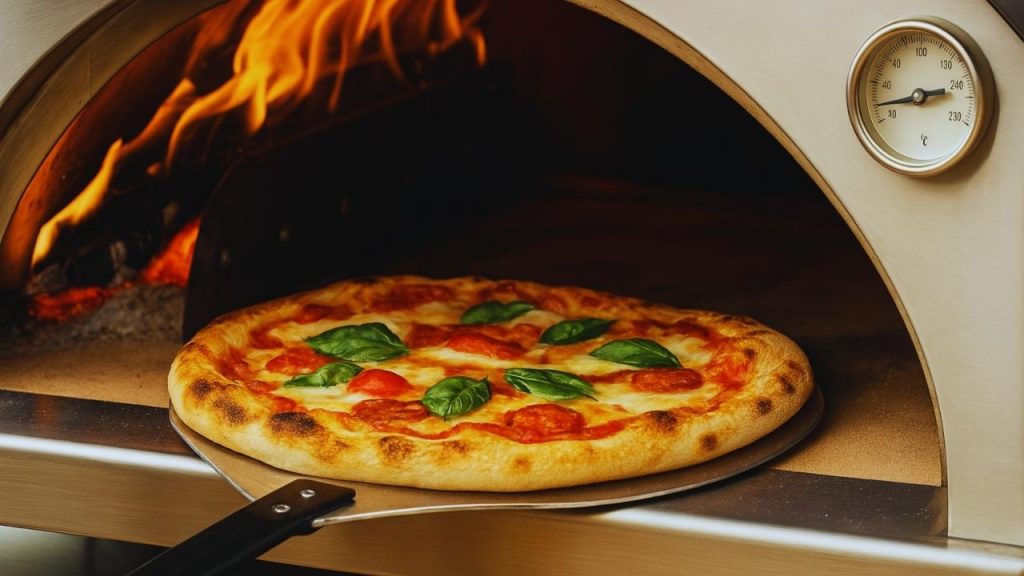
To fairly compare the Member’s Mark and Cru Champion pizza ovens, I used the same setup and process for each. I prepared identical batches of classic Neapolitan-style dough and let them ferment overnight to ensure consistent hydration and texture.
Each oven was preheated to its highest achievable temperature using the recommended fuel—propane gas for the Member’s Mark and kiln-dried hardwood for the Cru Champion. I tracked warm-up times with an infrared thermometer, noting the heat retention on the stone as well as the ambient oven temperature.
For cooking, I stretched each dough to the same diameter, topped it with San Marzano tomato sauce, fresh mozzarella, and a drizzle of olive oil, then baked each pizza while monitoring cook time and evenness.
After removing the pizzas, I evaluated:
-
The browning and char on the crust
-
The melt and caramelization of the cheese
-
The consistency of cooking across the entire base
-
Overall taste and texture
Finally, I tested cleanup for each oven, paying attention to how easy it was to clear ash or wipe down the cooking surface.
This controlled approach helped me get an accurate picture of both ovens’ real-world performance.
Conclusion
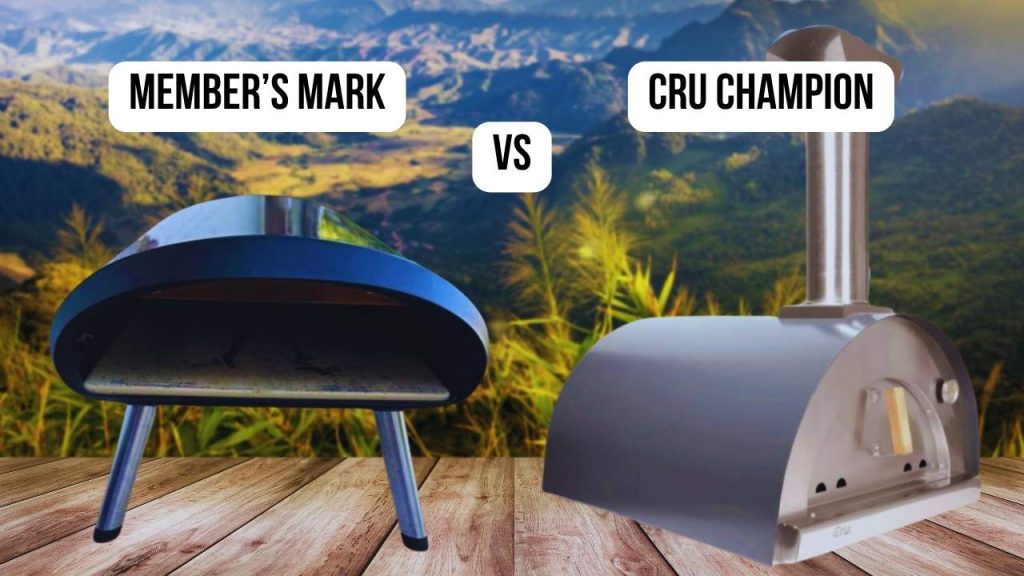
Ultimately, it’s your choice whether you prefer the Member’s Mark for its straightforward convenience or the Cru Champion for its impressive versatility and traditional wood-fired experience. If you decide to buy one, I’d highly appreciate it if you use my referral links when purchasing. I’ll earn a small commission at no cost to you, which helps keep this blog running.
Thank you for supporting my work and happy pizza making!
Check the list before picking your next pizza oven.

